After he retired from the Army, George Marshall was special envoy to China, secretary of state, president of the American Red Cross and secretary of defense. He commuted to Washington, D.C., during the week from his homes in Leesburg, Virginia, and Pinehurst, North Carolina, by auto and air, and he sometimes stayed in Washington.
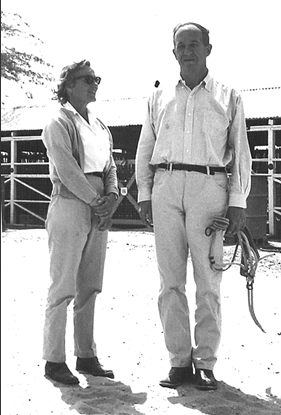
Madge and John Pendleton in the 1950s.
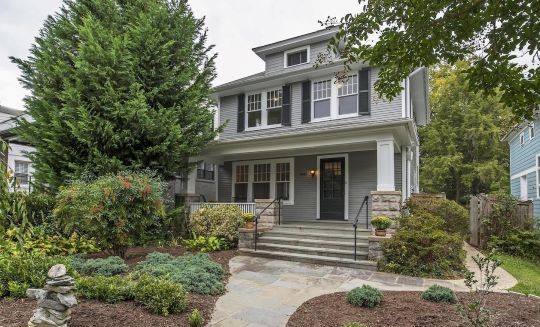
Madge and John Pendleton’s home at 4945 Brandywine St., NW.
When he was secretary of state, he occasionally stayed in Washington with Madge Brown Pendleton and her husband. She had been married to Marshall’s stepson, Allen Brown, before he was killed in 1944. Marshall wrote in 1947 to Madge at 4945 Brandywine St., NW, which she had rented after living at 3002 R Street. “It is very comforting to know that I may have a pleasant habitate [sic] in Washington during weekdays,” he said. He told her he could also stay with Robert Lovett at 2425 Kalorama Rd. NW or Frank McCoy at 1633 31st St. NW.
Marshall later told Madge that his wife Katherine would send furniture “for the room and other equipment. So do not draw on your supplies to meet my necessities.” Katherine told Madge in 1948 that “it means a great deal to me to know that George is with you and does not go back to an empty apt. or hotel at night.” He had also said that he could stay at the Army-Navy Club or with Sally Chamberlin, his secretary at the Pentagon.
He told a friend in 1947 that he and Katherine were staying in an apartment at his old address of 2400 Sixteenth St. in Washington and would stay there while the occupant was away. That was the same apartment building where he and his first wife, Lily, had once lived. He told Henry Stimson in April 1947 that he and Katherine were temporarily staying in the home of Mr. and Mrs. Nelson Rockefeller at 2500 Foxhall Road NW. Katherine would be “running down in the country to Leesburg every few days and I hope to weekend there,” he said.
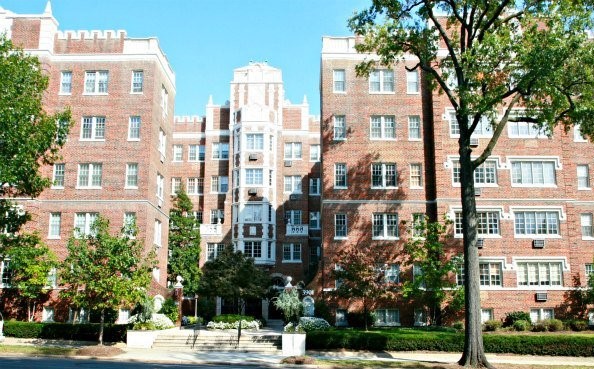
Apartments at 3901 Connecticut Aveune today
Marshall told Marshall Carter in October 1950 that he and Katherine had rented Apartment 505 at 3901 Connecticut Ave., in Washington, and that they would be moving the bulk of their furniture from the house in Leesburg to that apartment and would close Dodona Manor in Leesburg except for possible weekends. They ate many meals in restaurants and had an unlisted telephone number.
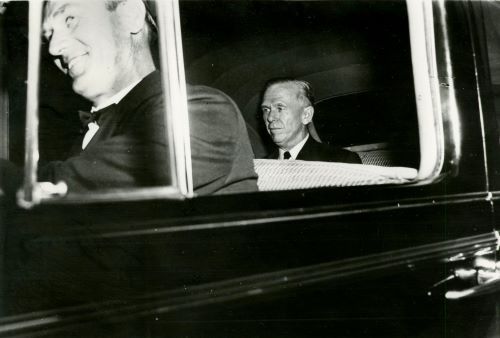
Marshall being chauffeured by MSgt. James Powder.
When he was secretary of state, Marshall often did not return to his office after cabinet meetings on Wednesday afternoon, going instead to Leesburg. His limousine took him to a gas station on Highway 7 at Seven Corners, where he was picked up by Sergeant Heffner, his orderly, in a less-conspicuous car because Marshall did not want to be seen arriving in Leesburg in a large, government car. Heffner said that Marshall sometimes drove himself from Washington to Leesburg in a Plymouth from the motor pool and was once stopped for speeding in Great Falls. When the policeman saw that it was Marshall, he did not give him a ticket.
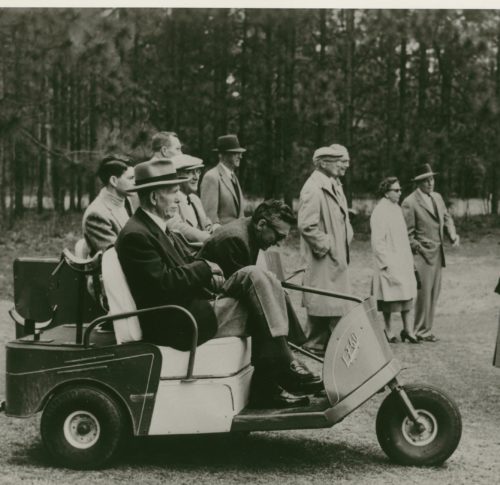
Marshall with Sgt. Heffner at a golf tournament in Pinehurst, NC, in 1958
While the Marshalls lived in Pinehurst during winter months, Marshall remained in Washington during the week and flew to Pinehurst on weekends in a military aircraft like one that he had used on a trip to Korea as secretary of defense. He sometimes flew to Leesburg as well, and he told playwright Robert Sherwood an amusing story about one trip. By the time he got to the house in Leesburg, the telephone was ringing with an urgent order to return to Washington. He had to say goodbye to Katherine almost before he had time to say hello. “Do drop in again some Sunday,” she said to him, “when you can stay a little longer.” His commuting was complicated by the fact that Leesburg stayed on Eastern Standard Time when Washington switched to Eastern Daylight Time. “To get to my desk around 8 a.m.,” he complained, “I had to leave home around 6:15!” (Loudoun County stayed on standard time because the many dairy farmers in the county thought that changing clocks would have a negative effect on milk production.)
Notes:
Photos of buildings today from MLS.
Tom Bowers is the former docent director at George Marshall’s Dodona Manor in Leesburg, Virginia. He was professor and dean of the School of Journalism and Mass Communication at the University of North Carolina at Chapel Hill from 1971 to 2006.
